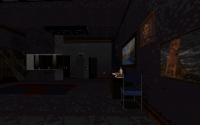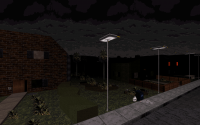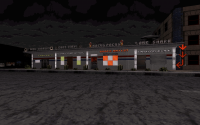 Sanek, on 03 June 2020 - 06:57 PM, said:
Sanek, on 03 June 2020 - 06:57 PM, said:
Do you really have every piece of the map in your head before you start mapping? I believe we already discussed it before, when I said that I have the general idea of a map and it's key areas, but have trouble with everything in-between. In case of my WIP map, I know where everything should be but when I actually start doing something, everything goes not as planned. It's like you imagined that you'll make work of art but it looks more like kid's drawings in reality. I can see the player going down the street, looking at various buildings and cliffs in the distance, but i just can't visualise it in the editor. I guess I should really follow your tip and memorise the whole map in my head before making anything. I wanted to make a Red-like map which means it'll take a lot of time, but what i have done so far looks more like Winterfall. Perhaps I'll make the map smaller than intented yet keep the layout intact to keep things easier to plan!
It's kinda sad that I never mastered the planning aspect of mapping for all these years. Despite some obvious design progress I still make maps like I did 10 years ago, when I just doing what turns out and only tentatively follow map's "legend".
I usually have the basic idea for the layout, which is the general shape of the level in 2D mode but also in 3D mode (considering the vertical axis - I know how flat or steep I want the gameplay area to be), as well as the general progression (which parts of the layout should be accessed in which order, in a way that complements the structure of the blueprint with interconnections or at least some logic, e.g.. to avoid unnecessary backtracking and other undesired gameplay elements).
Sometimes I do get ideas for individual design elements for a specific level, but I don't start actually drawing them before I have gathered enough of those theme-related ideas to know how, where and when they should be placed and should perform in the map. That includes all the strategic locations, all the more or less strongly sub-themed, recognizable hot spots, the enclosed vs. open spaces depending on what scenario I feel like should come into play, the main puzzles and probably more fundamentals on that level.
What I do improvise is the look of everything, playing with textures, lighting/shading, trimming, palettes and all is fun but past a certain point those considerations are essentially cosmetic, obviously they're crucial to immersion and atmosphere but they shouldn't get in the way of the structure of a good barebones level. Different themes by definition follow different codes but form follows function, for instance one should make a space map because they feel like making big open areas and interesting sector effects, not because they want to use a different set of tiles than they're used to when the design style they're going for with the layout is more typical of the one of a city map with smaller-sized corridors, blockier dead-ends and micro nooks and crannies for instance.
Maybe you're tempted to follow what other people have done before exactly because of that lack of scope - you want to make maps but you don't know how to handle your inspiration being naturally hit or miss (just as much as the next guy's), so you keep insisting even though you're running dry (so for the lack of anything new you either repeat yourself, or what you've seen somewhere else). But sometimes one gets better at something by marking a pause from all the noise and that's when original ideas start coming from within.
I totally know what you mean by envisioning something grand in your head then being unable to reproduce it, I've been there before, even sometimes catching dreams about the stuff I would have liked to build - what my levels should have ideally looked like as I envisioned them, vs. the poor reality of what they actually looked like that I'd then face upon waking up. But that's not a matter of absolute ability, just of a mix of technique and perspective. The more free you'll break from 'bored' mapping all the while letting original ideas come from both everything around you and within, the further you'll naturally bridge that gap.
 ck3D, on 23 May 2020 - 08:41 AM, said:
ck3D, on 23 May 2020 - 08:41 AM, said: ck3D, on 23 May 2020 - 08:41 AM, said:
ck3D, on 23 May 2020 - 08:41 AM, said: Merlijn, on 23 May 2020 - 08:53 AM, said:
Merlijn, on 23 May 2020 - 08:53 AM, said: Merlijn, on 22 May 2020 - 12:03 PM, said:
Merlijn, on 22 May 2020 - 12:03 PM, said: pmw, on 23 May 2020 - 02:31 PM, said:
pmw, on 23 May 2020 - 02:31 PM, said: Sanek, on 03 June 2020 - 06:57 PM, said:
Sanek, on 03 June 2020 - 06:57 PM, said: Sanek, on 03 June 2020 - 06:57 PM, said:
Sanek, on 03 June 2020 - 06:57 PM, said: Mark, on 04 June 2020 - 05:25 PM, said:
Mark, on 04 June 2020 - 05:25 PM, said:

